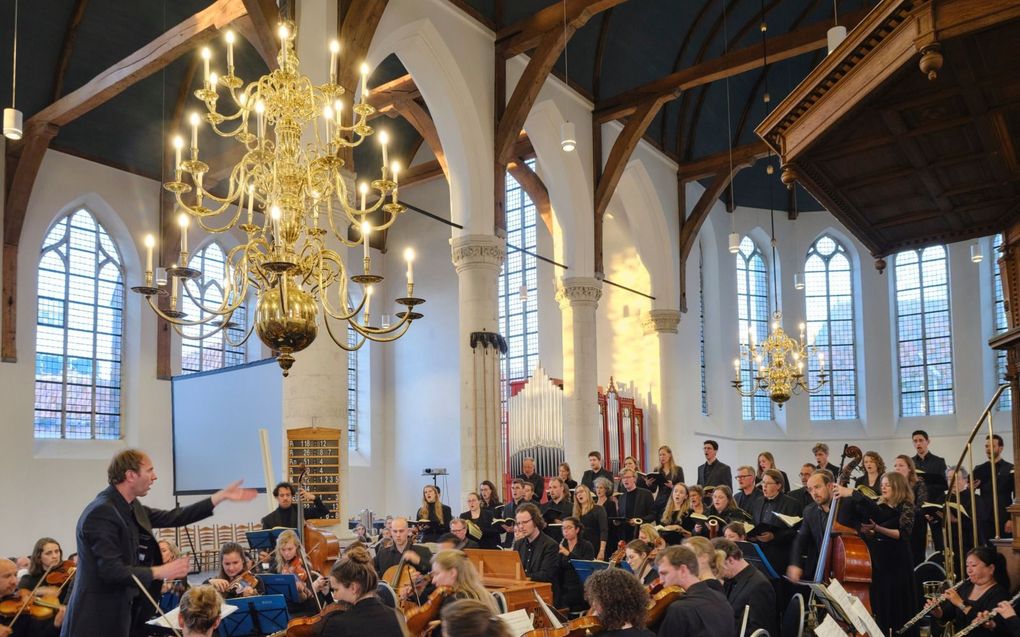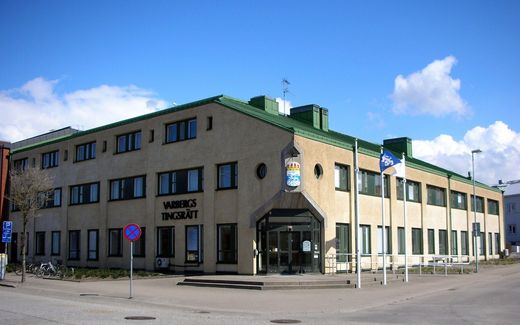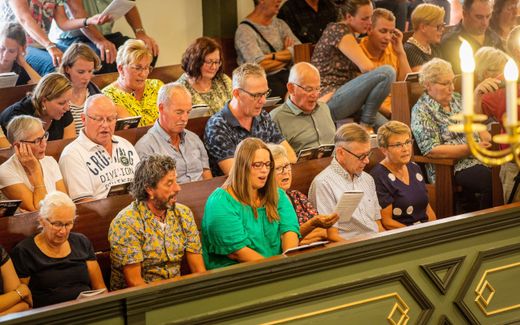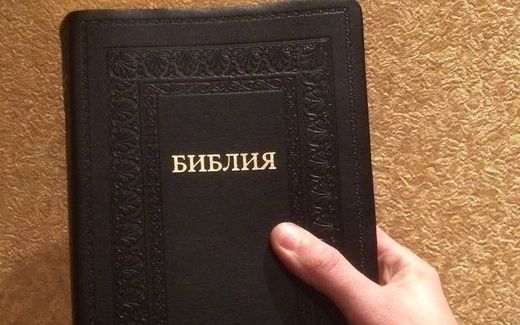Young people initiated into the secrets of the St Matthew Passion
12-04-2022
Western Europe
Jaco van der Knijff, RD

Photo Sjaak Verboom
Western Europe
The St Matthew Passion. While some have no feelings about it, others cannot imagine the time around Easter without this masterpiece by Bach. More and more young people and children are also being initiated into the secrets of the Passion, as is apparent from three portraits.
The St Matthew Passion is a well-known concept for many. But what are we talking about? What is it, and where does it come from?
It is a piece of music of almost 300 years old, written by the German composer Johann Sebastian Bach. He worked in the city of Leipzig since 1723. As a cantor, he was responsible for the music that was to be played in the various Lutheran churches on Sundays and public holidays. Composition was also required for the services on Good Friday. It is customary to write passion music for this: the passion story, according to one of the Evangelists, is set to music.
And so, in 1727, Bach wrote an enormous composition for the Passion from Matthew 26 up till 27: 68 movements for choirs, orchestras and soloists. The piece was intended for the Vespers service on Good Friday in the Thomaskirche. The Bible text is presented in its entirety. A tenor is the “Evangelist” who tells the story, while the voice of all kinds of other speaking persons or groups is interpreted by a soloist or the choirs. Thus, a bass sings the words of Christ, a soprano interprets Pilate’s wife, and the choirs imitate the angry mob that shouts at Pilate “Crucify Him!”
In between there is room for reaction and reflection. The soloists sing short reflections (ariosos) or extended meditative reflections (arias) – famous is the aria of the alto after Peter’s denial: “Erbarme dich”. In addition, the choir sings a chorale thirteen times that matches the story – for example, “Wer hat dich so Schlagen” when the soldiers beat Jesus. The whole is framed by an opening chorus ("Kommt, ihr Töchter") and a closing chorus ("Wir setzen uns mit Tränen nieder").
The three-hour piece is interrupted halfway by the sermon in Leipzig.
“Sometimes I got goosebumps from the music”
Luuk Pellikaan (12) from Wijngaarden: “This year I sang twice in the St Matthew Passion for the first time. I like singing. Why? I just love it. I was in a children’s choir. Then the conductor said I should go and see the Gorcum Boys Choir. I have been there for two years now.

Teacher Gerard de Wit works at my school. He is also a musician. On Friday 1st and Saturday, April 2nd, he performed a primal version of the St Matthew Passion twice. In Bleskensgraaf our school cooperated with three choirs. I sang with a choir at six chorales. In Zwijndrecht, I joined the Gorcum Boys Choir.
I love the music of the St Matthew Passion. It is really pretty. In the opening piece, ”Kommt, ihr Töchter”, we had to sing the chorale ” O Lamm Gottes unschuldig”. A beautiful piece. But when I have to name the most beautiful chorale I sang, I think of "O Haupt voll Blut und Wunden".
I stayed in Bleskensgraaf all evening on Friday; Saturday in Zwijndrecht, we were allowed to go home after the break. But I stayed. I thought it was so beautiful the night before. It sometimes gave me goosebumps. I don’t know exactly which piece, but every now and then, little things were so special. Beautiful rhythms, for example.
I want to perform this piece every year if I get the chance. Do I want to be a singer? I now have the idea to become a cameraman. But I will keep the option of a singer open.”
Hype in the Netherlands, especially in Naarden
The St Matthew Passion, once intended for the church service on Good Friday, gradually became a concert piece.
Bach performed the work a few more times in Leipzig after the first time in 1727. After he died in 1750, however, the composition fell into oblivion. In 1829, composer Felix Mendelssohn rediscovered and re-performed the music in a concert hall in Berlin.
In the Netherlands, the St Matthew Passion was performed for the first time in 1870 by Toonkunst Rotterdam. Other companies soon followed. In 1899, Willem Mengelberg performed the piece with the Concertgebouw Orchestra – the start of an annual tradition on Palm Sunday.
In Naarden, a different tradition started in 1922 – a century ago –: an annual performance in a church. The Netherlands Bach Society was founded specifically for this purpose. “Naarden” is becoming a concept. Politicians make an appearance there; Prime Minister Rutte is also often present. The Naarden tradition will even become an intangible heritage in 2021. Here and there, there is talk of hype, a “Matthew madness”: in no other country would people be so addicted to this work.
But there are also objections, especially in Reformed circles. The question that arises is whether you can perform the Passion with a piece of music. Isn’t it too sacred for that? And isn’t it a drama when one plays Peter and the other Judas? And the words of Christ by a singer who may be non-Christian? These objections are still alive. But it is undeniable that appreciation for the “Matthäus” in reformatory circles has grown in recent decades. Just last year, a pastor of a Reformed Congregation – Rev. G. J. Baan – drew attention to this passion music in seven episodes on YouTube under the title “Hope with Bach”.
“One big, impressive musical story”
Nadine de Jong (15) from Moordrecht: “I got to know the St Matthew Passion at the Ars Musica Choir School in Gouda. I’ve been there for about seven years. My brother used to go there too, and my sister still sings in the choir; we are a musically gifted family. The Choir School usually participates in St Matthew Passion performances every year, so maybe I was only 8 when I joined the first time.

This year, I am assigned for the performances in Zeist and Kampen last Wednesday and this Saturday. It is really beautiful to perform such a concert. As a Choir School, we will then sing four chorales. I think the most special is the opening chorus, with the orchestra and the choir, and through which we sing the chorale “O Lamm Gottes unschuldig”. Really pretty!
Last month, we performed the small St Matthew Passion with the Choir School in Ridderkerk. Then we sing parts of the piece, such as chorales and arias. Conductor Marjon van der Linden explains in between. We divide an aria like "Blute nur" or "Ich will dir mein Herze schenken" among a number of singers. That’s a lot of studying beforehand!
What I find special about the St Matthew Passion? That it is one big, impressive musical story with very different parts. It’s really bizarre how Bach composed all that.”
Taking the class to the St Matthew Passion
Young people are involved in the music of the St Matthew Passion in all kinds of ways. For example, they sing along in a performance with a choir school or boys’ choir. There are also initiatives to bring the St Matthew Passion to the classroom. For example, since 2003, the Dutch Bach Society has had the project “Eye to eye with the St Matthew Passion”. The aim is for secondary school students to become acquainted with Bach’s music. The teacher first gives an introductory lesson, after which a musician from the Bach Society gives a guest lesson. Then the class visits a performance.
Coordinator Hilde van Ruymbeke: “Students, for example, have had cellist Lucia Swarts or violin player Femke Huizinga in class, and then see her on stage in Naarden or Utrecht. We are getting enthusiastic responses.” In the last year before corona, almost 300 students from 14 schools were introduced to the St Matthew Passion in this way.
This year, about a hundred students from three schools, including the Van Lodenstein College in Amersfoort, are participating in the project. Van Ruymbeke hopes that there will be more next year, also through the new project” Baroque@School”, in which other Baroque music can also play a central role. “The aim is to make as many young people enthusiastic about Bach’s music as possible.”
“I am addicted to this music by Bach”
Frans Willem de Pater (20) from Barneveld: “I have listened to classical music from an early age on. The first time I consciously heard the St Matthew Passion must have been in Grade 7or 8 at the Van Lodenstein College. It was during a music class taught by soprano Margreet Rietveld. She was my mentor, and I took singing lessons from her. After a guest lesson about the St Matthew Passion, in the tenth Grade, we went to a performance in Naarden. In the fifth and sixth again.

Whether is that a special experience? Sure, it’s a magnificent thing! You live for it. When you are there and the first notes sound, you are in another world for three hours. Because I believe in the suffering gospel, it is something very emotional. I fully experience the drama of the story.
A highlight? The hushed aria “Aus Liebe” by the soprano, amid the cry that Jesus must be crucified. So unbelievably beautiful!
I am addicted to this piece of music. I am now also trying to make fellow students of the Utrecht CSFR fraternity Sola Scriptura enthusiastic for the” Matthäus”. I have arranged thirty cheap tickets for a performance of the Netherlands Bach Society in the Concertgebouw on Tuesday, April 12th. In advance, I tell them something about the piece. And then I hope they experience how great this music is. Because this piece isn’t just for musical people. Bach is accessible for everyone.”
This article was translated by CNE.news and previously published in Dutch daily Reformatorisch Dagblad on April 9th, 2022.
Related Articles






